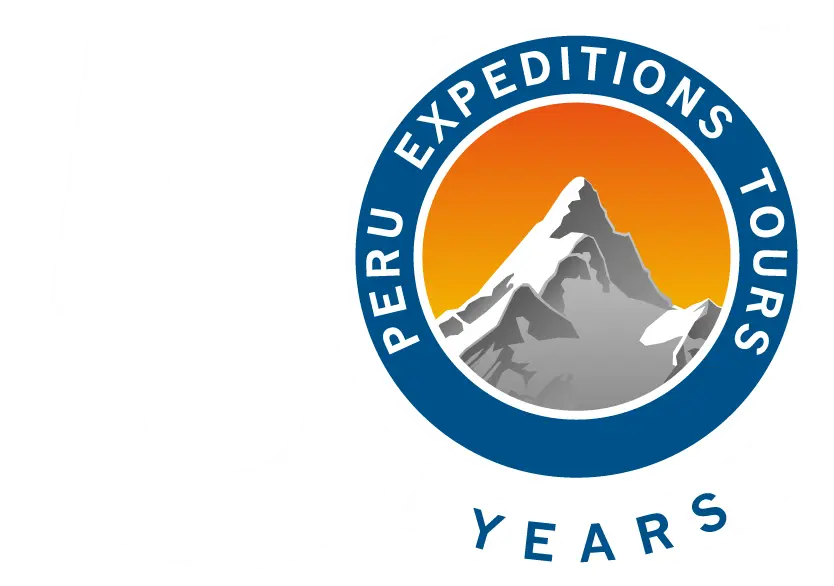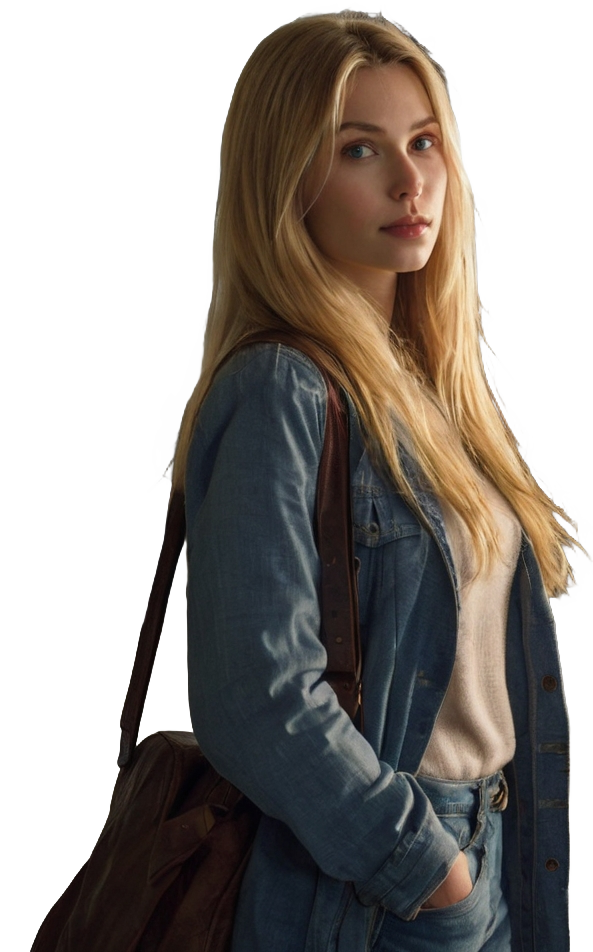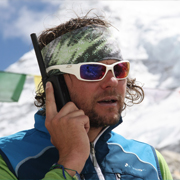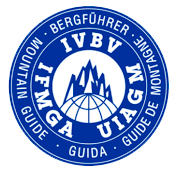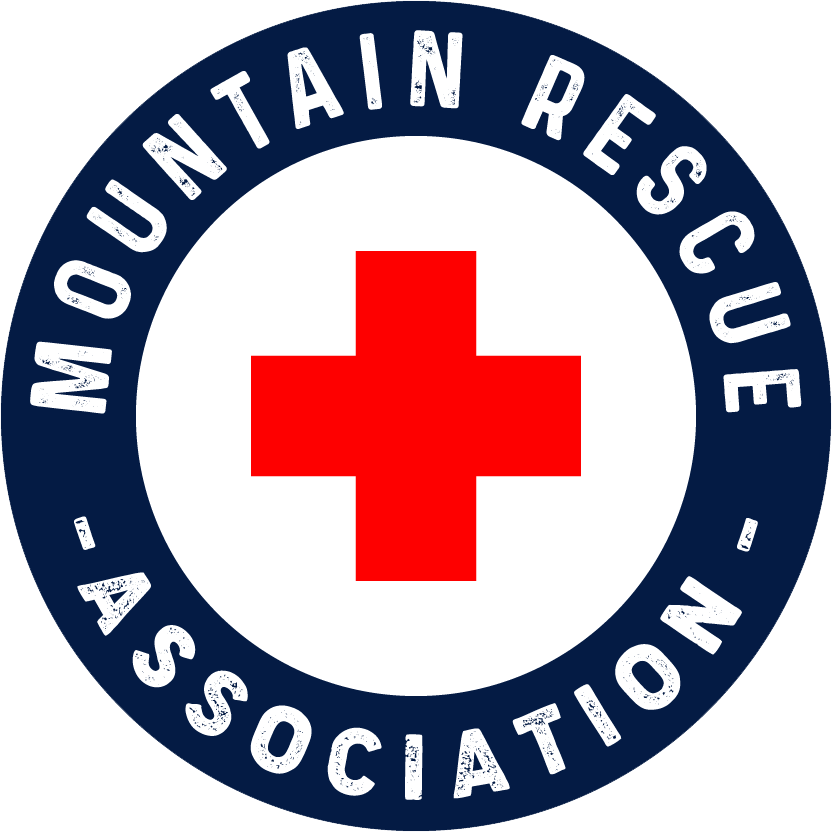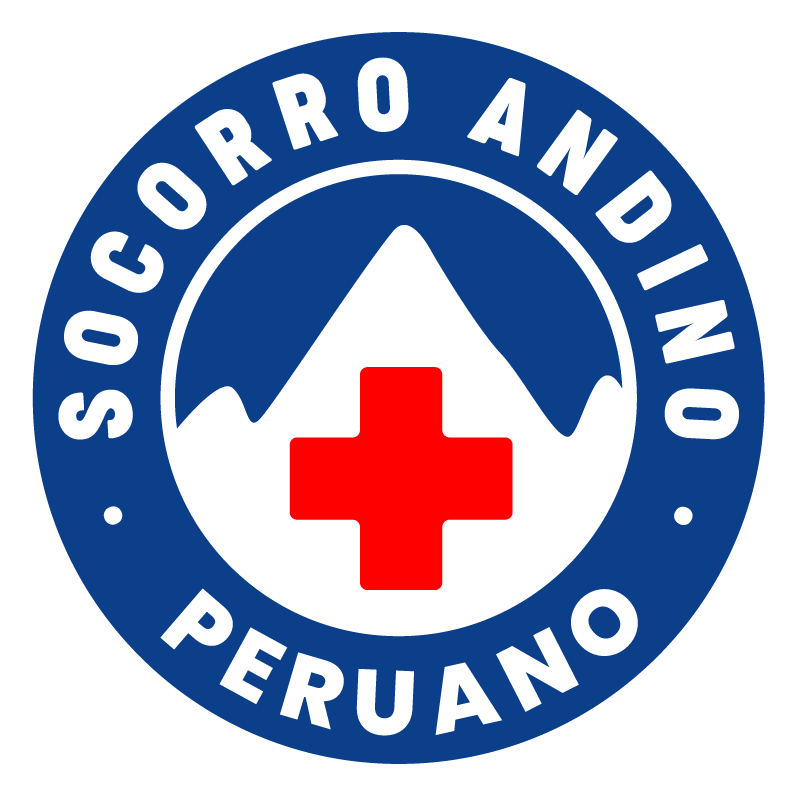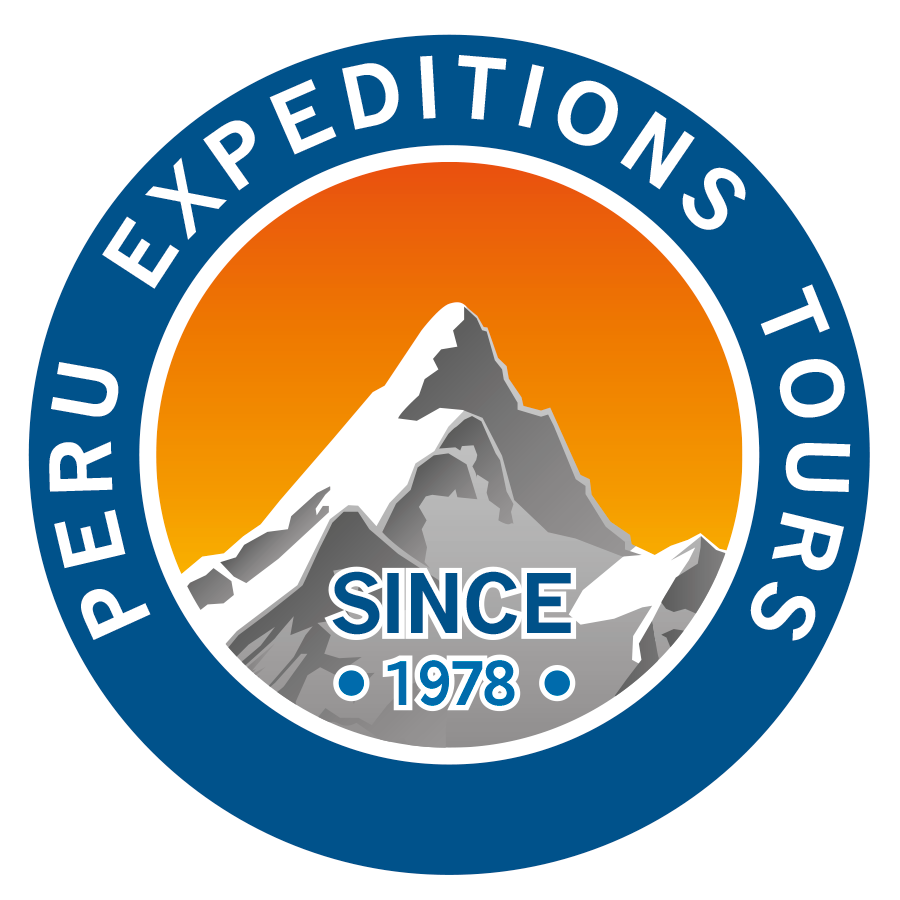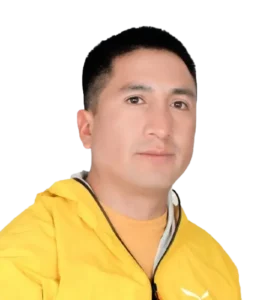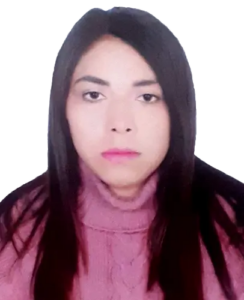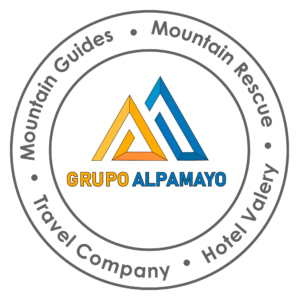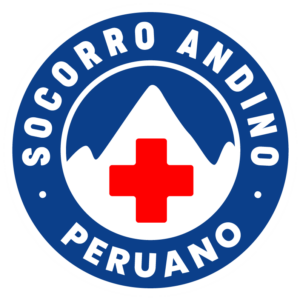Trekking Inca Trail to Machu Picchu
- Home
- Destinations
- Let’s go to Peru
- Trekking Inca Trail to Machu Picchu
Trekking Inca Trail to Machu Picchu (Huayna Picchu 2.667 m): The Inca Trail to Machu Picchu (also known as Camino Inca or Camino Inka) consists of three overlapping trails: Mollepata, Classic, and One Day. Mollepata is the longest of the three routes with the highest mountain pass and intersects with the Classic route before crossing Warmiwañusqa (dead woman). Located in the Andes mountain range, the trail passes through several types of Andean environments includingcloud forest and alpine tundra. Settlements, tunnels, and many Incan ruins are located along the trail before ending the terminus at the Sun Gate on Machu Picchu mountain. The two longer routes require an ascent to beyond 4,200 metres (13,800 ft) above sea level, which can result inaltitude sickness.
Located 2,430 meters high in a place of great beauty, in the middle of a tropical mountain forest, the sanctuary of Machu Picchu was probably the most amazing urban creation of the Inca Empire at its height. Its walls, terraces and ramps seem gigantic being carved in the rock cliffs, as if they were part of it. The natural setting, on the eastern slope of the Andes, is part of the upper Amazon basin, which has a varied flora and fauna. (UNESCO / BPI)
Concern about overuse leading to erosion has led the Peruvian government to place a limit on the number of people who may hike this trail per season, and to sharply limit the companies that can provide guides. As a result, advance booking is mandatory. A maximum of 500 people are allowed on the trail each day, of which only 200 are trekkers, the rest being guides and porters As a result, the high season books out very quickly. The trail is closed every February for cleaning. This was originally done informally by organizations such as South American Explorers but is now managed officially.
Inca Trail – A short history: The Inca Trail to Machu Picchu is in fact a small part of a vast network of trails and roads built by the Incan Empire over 500 years ago. Depending on which resource you read, the Inca trails (or Qhapaq Ñanare, which means network of trails) are estimated to have covered anywhere between 23,000km and 45,000km in distance – basically a lot! Consisting of mainly paved stone, the trails were integral in connecting the Tahuantinsuyo Empire, which ran from Colombia and Ecuador in the North; through Peru; Chile and parts of Argentina, and into Brazil and Bolivia (as seen on the map adjacent). The trails varied in size from 6-8m roads at their widest (typically in the coastal areas) to narrow 1m trails in the mountainous regions of the Andes. The trails were used for a variety of reasons including trade, efficient transport and war. Peruvian historian, José Antonio del Busto, believes the trails expanded rapidly under the rule of Huayna Capac, who is thought to have added 16,000km of trail to the network. Del Busto explains: “It is said (Capac) placed emphasis on the roads so as to be able to get his army around quicker and be able to crush the rebellions that flared up during his reign.” The one very unique characteristic of the trails is that they were built with the llama mind. The trails, particularly in the mountainous region, are steep, stepped and high – landscape characteristics that llama are well adept at traversing. Author Hugh Thomson writes in his acclaimed and highly recommended book, The White Rock: “We are used to a road system designed for the horse and then for the car: a system which tries at all cost to avoid steep gradients and whose ideal (so established by the Romans) is the straight road over flat ground. The Inca needs were very different: the expansion of their Empire was driven by the llama”. When the Spanish arrived in Peru in the 15th century they were amazed by the scale, ingenuity and beauty of the trails, despite having severe difficulty traversing them on horseback. Hernando Pizarro, one of the first conquistadors to arrive in Cusco, wrote, “The path in of the mountains is something to see, because it is built in very difficult terrain. In the Christian World we have not seen such beautiful roads. All of the crossings have bridges of stone or of wood.” Unlike the majority of trails, which were used for practical means, the Inca trail to Machu Picchu was solely used as a pilgrimage or religious route. It had no commercial use and is hence often referred to as the “Royal Road”, “Royal Sacred Highway” or “The Road of the Inca King”. The various Inca sites found along the 26-mile (45km) trail seems to support this theory. Hiram Bingham, an American academic and explorer, who discovered Machu Picchu in 1911, was amazed when he discovered the pilgrimage route leading to the city. Between 1913-1915 Bingham and his team uncovered much of the overgrown trail, and in the 1990s large portions of the route were restored. Today, the trail, which is situated in the Historic Sanctuary of Machu Picchu, is considered one of the greatest trekking trails in the world and is hiked by thousands of tourists every year.
Inca Route options: There are a number of ways to visit Machu Picchu, including catching a train or trekking on one of the alternative trails to Aguas Calientes – the town in the valley below Machu Picchu. But none of these alternatives is as popular and arguably as impressive as the Inca trail trek to Machu Picchu (aka Camino Inca or Camino Inka). Celebrated as Peru’s most famous hike, and one of the world’s most iconic trekking experiences, the classic Inca trek to Machu Picchu provides an awesome combination of sub-tropical Andean mountain environments, including cloud forest, alpine tundra and jungle, with an impressive array of Inca archaeological sites; some of which are worthy of a visit on their own! The ‘Classic’ trail is typically completed on a 4D/3N itinerary but can also can be lengthened by a day or shortened to a 2D/1N trek on the so-called ‘Short Inca Trail’. There is also an option to combine the Salkantay trek with the classic trail route for an epic and challenging 7D/6N adventure.
Some trekking companies depart from KM88, but this is rare as cars can only go as far at KM82. If you are travelling by train from Cusco it is possible to start from KM88, but the trail from this starting point joins up with the route from KM82 very quickly so there is no significant difference in the starting experiences. The total trek distance from KM82 to Machu Picchu is 45km (26 miles) and reaches a maximum altitude of 4,200m. It is a moderately challenging trek that can be completed by most people, as long as they are fit and well acclimatised (more on this below).
Note: the map is not to scale and the itinerary, particularly with regards to camping sites, can vary from tour company to tour company.
Inca Trail Permits: Permits for the Classic Trail route are tightly restricted and nearly all dates each year sell out months in advance. This applies to all operators! If you are looking to book onto the classic pilgrimage route and find permits sold out for your preferred dates we recommend you look for either a Lares trek or Salkantay trek.
Best time to hike the Inca Trail: Two seasons dominate the weather in the sub-tropical Peruvian Andes – the dry season runs from late April through to early October, and the wet season starts in late October and continues through to April. The Inca trail is busiest during the dry season months, particularly May-September. If you want to hike at this time in the year it is advised that you book your trek at least 6 months in advance. The dry shoulder months of March / April and October / November, can also make a good time for trekking, although the probability of rain is higher. Here is a schematic showing the average number of rain days per month in the Machu Picchu Sanctuary. December, January and February are the wettest months, and the Classic Inca Trail and Salkantay / Inca Trail Combo is in fact closed for maintenance in February (it is possible to trek the Short Inca Trail or any of the alternative treks to Machu Picchu during Feb). Temperatures in the region are fairly consistent throughout the year, with days reaching into the high 20 Celsius (70s and 80s Fahrenheit), and dropping into the low digits to sub-zero temperatures at night and in the early mornings.
Temperature fluctuations are also common as you ascend high passes or drop into sun-exposed valleys. It is important that you take layered clothing to adjust comfort levels as temperatures fluctuate throughout the day and across different levels of altitude (see Inca trail packing list below). Micro-climates in the mountains mean that it is possible to encounter rain at anytime in the year, so do bring wet weather gear as well.
- 7 Days/6 Nights
- March to December - All year on request
- Moderate
 Condition
Condition
Travel Program
Day 1: Arrival in Cuzco (3399 m) - Meet and transfer from airport to Hotel
Arrival in Cuzco. Meet and transfer from airport to Hotel. Complimentary. Optional: City Tour where we visit the Cathedral, Koricancha, Sacsayhuaman, Kenko, Puca Pucara and Tambomachay. City tour add $ 25 p.person Min 4 person. Evening : at 18:00 pm Meeting with Inca Trail guide to review details on your trek. Overnight Hotel (B/-/-)
Overnight
Hotel
Flight
Arrival to Cusco
Drive
1 Hours approx
Hiking/Tour
1 Hour approx.
Meals
-/-/-
Day 2: Optional : Sacred Valley Tour: Visit Pisac ruins, Pisac Market and Ollantaytambo Fortress
Enjoy Cuzco city. Optional : Sacred Valley Tour: Visit Pisac ruins, Pisac Market and Ollantaytambo Fortress. Add $39 p.person Min 4 person Or River Rafting $45.00.
Overnight
Hotel
Drive
4 Hours approx
Hiking/Tour
5 Hour approx.
Meals
B/L/-
Day 3: From Cuzco transport - Trekking to Huayllabamba (3000 m)
We pick you from your hotel and drive towards to Km 82 (2650 m) where we collect the porters to commence walking, via Urubamba Valley. From km 82 we cross the raging Vilcanota river. Walking in the shadow of snow-capped Mount Veronica ( 5680 m). We stop for lunch. We complete 6 hours of gentle hiking by reaching the first campsite by the river at Huayllabamba (3000 m).
Overnight
Camping
Drive
4 Hours approx
Hiking/Tour
5 Hour approx.
Meals
B/L/D
Day 4: Huayllabamba - Trekking to Pacaymayu (3900 m)
This second day is the most arduous of our journey. After a nice breakfast we commence by ascending to Warmihuañusca ( Dead Women ) pass ( 4200 m). This change of altitude means that we will pass through three separate ecological zones during the day : Quechua, Yunga and Puna ( from valleys with trees, through high pasture, to arid grassless are as short of the snowline ). The ascent of over (1,200 m) to the first pass earns magnificent views. Descending from this superb vantage point we pass waterfalls before making camp at Pacaymayu.(3550 m). We complete 8 hours hiking.
Overnight
Camping
Hiking/Tour
6 Hour approx.
Meals
B/L/D
Day 5: Pacaymayu (3900 m) - Trekking Wiñaywayna (2600 m)
The day starts with the pass of Runkuracay (3900 m) where we see an Inca watchtower. Then we continue to the Inca ruins at Sayacmarca (a small maze like ruin built above a sheer cliff ) and, passing through a rock tunnel, we reach Phuyupatamarca ( City above the clouds) (3600 m), a beautiful set of linked stone baths still supplied by mountain streams. From this area, we should achieve views of Mt.Salkantay (6271 m), one of two most sacred peaks to the Incas. The descent down from the third pass (3600 m) is by a continuous set of steps (over 2300 of them), into cloud-forest, to our last campsite. From here a short walk takes us to the impressive ruins of Wiñaywayna (2600 m). The extra relaxation time provided here allows us to recoup our strength to make an early start the next day and maximize the experience of Machupicchu. We complete 7 hours.
Overnight
Camping
Tours/Hiking
7 Hour approx.
Meals
B/L/D
Day 6: Wiñaywayna - Trekking to Machu picchu (2450 m) - Huaynapicchu (2720 m) - Transfer Tren to Cuzco
A pre-dawn breakfast allows us to ascend to Intipuncu (the sun-gate) (2750 m) where we may observe the sunrise over Machupicchu (2450 m) After taking in this memorable view we descend to the site for a guided tour, starting before the crowds arrive by train from Cusco.We complete 3 hours hike. There should be 6 to 7 hours available to spend in this unique archaeological site, allowing ample opportunities to explore on your own. Those not yet tired of heights might like to climb Huaynapicchu for an unparalleled view of the lost city of the Incas ( add $ 65 require to make reservation in advance). I am working on building in a chance to visit endangered Andean Bears at the Inka Terra Sanctuary nearby. At the nearby town of the same name we take the afternoon train for Cusco. Transfer to your hotel . B.(2,750 – 2450 mts).
Overnight
Hotel
Drive
5 Hours approx
Hiking/Tour
5 Hour approx.
Meals
B/L/-
Day 7: City Cuzco - Flight to Lima (161 m) Back Home
The end of the trip, if you are interested to extension tour in Peru: Cordillera Blanca, Cordillera Huyahuash or in South America.
Overnight
Hotel
Flight
Go back home by plane
Drive
1 Hours approx
Hiking/Tour
1 Hour approx.
Meals
B/-/-
Included meals: B=breakfast; L=lunch; D=dinner
What's Included
Services included in the prices:
- Acommodation in Cusco x 3 nights
- Breakfast is included in Hotel rate
- Private Tourist bus from Cusco to Km 82 (initial point) we pick you up from your hotel
- Professional Inca Explorers English Speaking guide (with license)
- Entrance fee to the Inca Trail Park and to Machupicchu ($ 98.00)
- Specialized Cook + assistant
- Nutritious, delicious meals with fresh, high quality ingredients, high in energy value and prepared carefully to avoid illness. 3 Breakfast, 3 Lunch, 3 Dinner, & drinks
- Happy Hour with Machu Tea -every afternoon
- Warm water each morning to wash yourselves
- Boiled Purified Water after breakfast to refill your water bottles
- Camping Equipment : two person tent – 3 season (brands The North Face, REI)
- Tent for kitchen, tent for dinning , mattresses, camping stools, camping tables and cooking gear, oxygen, first- Aid – Kit
- Fairly treated Porters carry the camping equipment, tents, food, cooking gear, dining tents.
- Extra porters to carry your duffel bag this includes your sleeping bags. Max 6 kilos p.p (clients carry a day pack with essencial belongings)
- Health and Insurance for our porters, cooks, assistants, field crew and Inca Explorers staff
- Bus from Machupicchu down to Aguas Calientes ( 25’ )
- Afternoon tourist train/Bus to Cusco – Expedition class
- Transfer from train station to Hotel
Not included:
- Meals not mentioned in the program (example: dinners in Cuzco)
- Entry fee to Huaynapicchu Mt.( add $65.00). **Require to make reservations in advance
- Sleeping bag Add $ 20.00 (for the whole trip, sleeping bags are from down and feather)
- If you want to upgrade your train to Vistadome Class or to an earlier train $ 40.00 p.p
- Gratuities
- Extra personal expenses
- Internal Flights, insurance. Visas. Cancellation fees
- Excursion to the Sacred Valley ,City Tour in Cusco, River Rafting
Keep Exploring More Travel Ideas Across South America | Popular destinations
Discover a wide range of travel ideas throughout South America. Every one of our proposals is fully customizable to fit your preferences and make your journey truly unique.
- Visit Machu Picchu
- Inca Trail Trekking
- Sacred Valley Tour Cusco
- Rainbow Mountain Cusco
- Backpacker trips to Cusco
- Choquequirao Trek
- Ausangate Trek to Machu Picchu
- Salkantay Trekking Adventure
- Short Inca Trail to Machu Picchu
- Lares Trek to Machu Picchu
- Vilcabamba Trekking
- Climb Volcano Chachani
- Visit Salar de Uyuni
- Bolivian Highlands
- Climb Huayna Potosi
- Visit Isla del Sol Sun Island
- Climb Volcano Sajama
- Climb Cotopaxi & Chimborazo:
- Climb Volcano Ojos del Salado
- Visit Torres del Paine
- Climb Mount Aconcagua
- Visit Iguazu Falls & Rio
- Climb Mount Orizaba
- Visit Rainforests and Volcanoes
- Climb Volcano Tolima
What to Bring
What to Bring or take fo Day Hiking and Technical Equipment for Climbing Expedition
This equipment list is compiled to provide you with adequate help when choosing your equipment for a climb. Most items are required. Please consider each of them and make sure you understand the function and exclusive use for mountaineering, before substituting or removing items from this list. Please note that this list has been carefully annotated by the organizer. Remember that mountaineering, climbing or mountain expeditions tours is an extreme, risky sport, therefore everything related to it is of great attention.
Equipment Trekking
![]() Hiking backpack for hiking 50 to 60 liters
Hiking backpack for hiking 50 to 60 liters
![]() Light gloves for hiking or (Optional Mittens waterproof)
Light gloves for hiking or (Optional Mittens waterproof)
![]() Medium weight socks
Medium weight socks
![]() Sleeping bag (-15º to 20ºC)
Sleeping bag (-15º to 20ºC)
![]() Small daypack for one day hiking 30 liters
Small daypack for one day hiking 30 liters
![]() Weather-appropriate clothing (think moisture-wicking and layers)
Weather-appropriate clothing (think moisture-wicking and layers)
![]() Hiking boots or shoes
Hiking boots or shoes
![]() Medium weight parka with fibber fill or down
Medium weight parka with fibber fill or down
![]() Rain poncho (or rain gear)
Rain poncho (or rain gear)
![]() Long-sleeved shirts
Long-sleeved shirts
![]() Fleece or Wool sweater and/or trousers
Fleece or Wool sweater and/or trousers
![]() Lightweight pants
Lightweight pants
![]() Cotton short-sleeved shirts or t-shirts
Cotton short-sleeved shirts or t-shirts
![]() Water bottle for hiking or trekking
Water bottle for hiking or trekking
![]() Strong waterproof duffel bag
Strong waterproof duffel bag
![]() Flashlight with spare batteries and bulb
Flashlight with spare batteries and bulb
![]() Towel for personal hygiene each participantFirst-aid kit
Towel for personal hygiene each participantFirst-aid kit
![]() Regular and long underwear
Regular and long underwear
![]() Knife or multi-tool
Knife or multi-tool
![]() Light cap and wool hat
Light cap and wool hat
![]() Sunglasses with UV certification, Sun block, lips
Sunglasses with UV certification, Sun block, lips
![]() The rest of the list Essentials as appropriate for your hike
The rest of the list Essentials as appropriate for your hike
![]() Grooming and personal hygiene kit
Grooming and personal hygiene kit
![]() One Hiking Buff per person
One Hiking Buff per person
Equipment Mountain
![]() 3 Locking carabiners, we recommended per person
3 Locking carabiners, we recommended per person
![]() We recommend 2 ice screws for each client
We recommend 2 ice screws for each client
![]() 1 Daisy Chain (Life Line) per each person
1 Daisy Chain (Life Line) per each person
![]() 2 Ice axes (per person) technical, we recommended GRIVEL company
2 Ice axes (per person) technical, we recommended GRIVEL company
![]() 1 ATC descender (Rappel), this is very necessary for technical mountains
1 ATC descender (Rappel), this is very necessary for technical mountains
![]() 2 Cords for prusik, very important (Size Cord 6 mm x 10 m. long)
2 Cords for prusik, very important (Size Cord 6 mm x 10 m. long)
![]() Gloves(Good gloves) for expeditions over 6000meters
Gloves(Good gloves) for expeditions over 6000meters
![]() Harness for climbing
Harness for climbing
![]() Sleeping pad / Mattress, we recommend with air or inflatable mattress
Sleeping pad / Mattress, we recommend with air or inflatable mattress
![]() Crampons, we recommended GRIVEL company
Crampons, we recommended GRIVEL company
![]() Walking sticks – Trekking Poles (optional), a pair per person, we recommended GRIVEL company
Walking sticks – Trekking Poles (optional), a pair per person, we recommended GRIVEL company
![]() Down Jacket for expedition
Down Jacket for expedition
![]() Very important to have personal clothing such as pants and jacket with GOROTEX certification
Very important to have personal clothing such as pants and jacket with GOROTEX certification
![]() First aid kit, for high mountains, because we as guides cannot medicate clients
First aid kit, for high mountains, because we as guides cannot medicate clients
![]() Backpack Capacity 60 liters, it is better to have a bigger backpack to go comfortably to the high camps, because here you have to carry all your personal things
Backpack Capacity 60 liters, it is better to have a bigger backpack to go comfortably to the high camps, because here you have to carry all your personal things
![]() Gaiters or Leggings, now modern boots already have built-in (Incorporated), but better to have an extra pair
Gaiters or Leggings, now modern boots already have built-in (Incorporated), but better to have an extra pair
Dressing appropriately for the mountains can make the difference between a pleasant trip and a really uncomfortable one. Clothing must provide the right degree of temperature, perspiration and be well ventilated. Preferably cotton clothing should be avoided, as in humid conditions they absorb body heat.
In general, the weather conditions in in the Andes of South America can vary from day to day and even throughout the day. Therefore, clothing must be versatile.
Please do not hesitate to contact us with any questions you may have regarding the necessary equipment.
Hotel: American Buffet breakfast
City Tour Includes: Private Tourist transport, professional English speaking guid
Not include: Visitors pass $ 53.00
Reservation:
- Important: Important – Under current park regulations, trek permits are sold on a first come/first served basis, and are limited to 500 persons per day, including passengers, guides, cooks and porters. We would recommend you to make your reservations as far in advance as possible, popular dates from April to August get book early.
To make your reservations we require the following information:
- ** your full name as it appears on your passport
- ** your nationality
- **passport number
- ** date of birth
- **occupation
- **gender
- ** If student you must send scan your ISIC Card current from
- ** If you required to hire extra porter to carry your personal day belongings ( we need to reserve their spaces as well)
- **Deposit of 500.00 per person of the tour price in advance. You may want to charge on your credit Card Visa (we only take Visa Card)
- **Remain balance will be paid upon arrival in Cusco
Extra excursions in Cusco with our travel agency:
(You can pay for these separately upon arrival in Cuzco)
City tour in Cusco: Everyday 13:00 – 18:00 pm
Price: $ 25.00 Min 4 ✓
In the early afternoon enjoy the Cusco city tour that includes the visit to impressive Incan temples & ceremonial sites around Cusco city like; Sacsayhuaman (Temple of the lightning ) with its incredible-precise stone work and its megalithic constructions, the amphitheatre of Qénko, Puka Pukara and Tambo Machay ( temple dedicated to the water). Then Visit the Cathedral and the Koricancha, the holiest Incan ritual site in the area. With it finest stone work . Return to your hotel and free time at leisure to explore the city its picturesque streets, souvenirs shops, splendid Cusco restaurants.
Sacred Valley of the Incas: Daily departure 08:30 – 18:30 pm
Price: $ 39.00 p.p Min 4 Pax ✓
After breakfast we travel to the Sacred Valley of the Incas, the amazing landscapes and Andean mountains views accompany us in our journey, as we see traditional villages, farming scenes & colorful clotting. Then we descend to the sacred Valley of the Incas and note that Incan people found in this as a paradise for farming and develop advanced irrigation techniques. Later in Pisac town on a side of the Urubamba River visit the Pisac traditional food market and the handy crafts market, and the site above this town from where you have a amazing view of all the Valley.
We continue along the Valley and reach Urubamba where you can have lunch ( this is on your own)Afternoon we go toward to Ollantaytambo Village an authentic Inca living town we ascend to The Ollantaytambo ruins an outstanding ritual site, formed by enormous beautifully carved stones and wonder how come they could transport megalithic blocks at such a location. Enjoy of the same impressive views over the valley. Later it was used as a fortress by Manco Inca Yupanqui in the final inca’s rebellion against the Spanish invasion. We return to Cusco.
River Rafting at Urubamba river:
The Urubamba river runs from the high Andean ranges down through the Sacred Valley of the Incas, past Machupicchu and into the jungle. It has some exciting white water depending on the section of the river being done and the time of the year. One of our most popular rafting sections during the season is the “Cusipata” section of the river on the Upper Urubamba. There are good class IIl rapids and the water is not contaminated, as unfortunately the Sacred Valley of the Incas sections of the river are.
Day 1: We pick you up at your hotel , after one and a half hours drive we arrive to the put -in at the shores of the Upper Urubamba River, at “CASA CUSI” our private campground. Our professional Rafting Guides will give you a safety talk and provide you with all the proper equipment for Rafting. We would be floating for approximately two and a half hours, running class II and III , introductory type rapids. Afterwards , we arrive to the take-out where our private bus will be waiting for us to take us back to CASA CUSI, where a hot Sauna will be waiting and a full course lunch will be provided. Our return to Cusco should be around 5 in the afternoon
Price: $ 45.00 p.person ✓
Includes:
- Transportation from Cusco to the put-in at the River
- All the rafting equipment, such as Helmet , Life jacket, paddle, self bailing Raft
- Spray Jacket, wet Suit
- Professional English speaking Rafting guide
- Delicious lunch
- Transportation back from the River
Prices & Dates
FROM/TO
PRICE (USD)
TRAVEL STATUS
–
FROM/TO
PRICE (USD)
TRAVEL STATUS
–
FROM/TO
PRICE (USD)
TRAVEL STATUS
–
FROM/TO
PRICE (USD)
TRAVEL STATUS
–
- Single Supplement (I want my own room and tent) – $000 on request.
Please note: Insurance for emergency evacuation is required for this trip. Call for more details.
» Additional dates available upon request
» Rates may vary from July 26th to 31th for the national holidays
Prices (per person):
| 1 PAX | 2 PAX | 4 PAX | 6 PAX | 8 PAX | 10 PAX | 12 PAX | 14 PAX |
|---|---|---|---|---|---|---|---|
| 4000 USD | 1950 USD | 1750 USD | 1650 USD | 1600 USD | 1550 USD | 1450 USD | 1350 USD |
Deposit for reservations: — USD (– EUR) ✓ Full payment 40 days before. No refund if you cancel less than 30 days!
Places: *Available
Trip-code: Number ►PER-
Duration: 07 days
Participants: Minimal: 4 Maximal: 12
Members: We don’t have an open group to join – We can open a new group – Contact us!
Country / Location: Peru
Mountain Guide: Eric Albino Lliuya
Other dates / additional info: Contact us!
3% early bird discount when booking 6 months prior to departure 2025
Legend Booking-information:
EZZ Single room supplement
🟢 On this trip, places are still available.
🟡 On this trip, only a few places left.
🔴 This trip is sold out / closed.
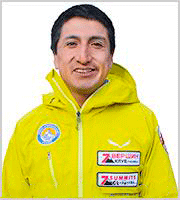
Eric Albino Lliuya
Expert guide certified by AGOMP
Tour-guide of Peru Expeditions
- WhatsApp: +51 943 081 066
- E-Mail: [email protected]
Hans Honold | Certified Mountain and Ski Guide
For a trip with a Professional Certified Mountain Guide from abroad with your own language that you speak, please request us to get in touch. We have guides working for our company from all over the world who are members of IVBV/UIAGM/IFMGA Certified Guides.
- Tel: +49(0)7344 929144-0
We are a Private Company with a Specialized Peruvian Andean Rescue Team “Socorro Andino Peruano”, offering expert High Mountain Rescue Services. Additionally, we provide satellite internet access during treks or expeditions, ensuring the safety and connectivity of our clients at all times. For more information, feel free to contact us via email or phone
- Tel: +1 (617) 459-4200
Only $1000 deposit to book
Pay over time, interest free
No booking fee, no change fee
24/7 support
Accommodations
Scroll through our exclusive accommodations for this trip below. Although very unlikely, we will be able to make substitutions when necessary. The comfortable accommodations that guests stay in every night offer comfort, the level that these options are are 3 stars and some hostels in some towns of first class quality to make your stay very pleasant.
*These exact accommodations are not guaranteed. In some cases, alternative accommodation of similar quality and location can be used.
Videos
Frequently Asked Questions
What our travelers or clients always ask questions before joining our trips, tours & expeditions, read all the information provided here.
Suggested FAQs
What experience and how fit do I need to be to climb this mountain? Is this program suitable for children or older people?
For our mountain climbing trips: If they are easily accessible mountains: For easy-climb mountains, well, you don’t need much experience, but if you already want to climb mountains above 6,000 meters and the conditions become more difficult, we recommend if you already want to go through mountains above 6,000 meters, have a basic or intermediate course for a good preparation. It is very important to be physically, technically and psychologically prepared.
Regarding the preparation of children: Everything will depend on which mountain you want to climb with your children, once you are clear on which of our tours or mountains you want to go with your children, we can give you some advice or see how to prepare them before going with they.
Regarding older people: It all depends on the condition of experience and how well the person is in health, on many occasions older people are the best to walk in the mountains because they have more experience, so it is always good to ask and find out about their experience of older participant. If you have any other questions, please contact us. For calls or inquiries to this number: +51 943 081 066
Will I need to bring any technical equipment of my own? Is it possible to rent equipment, and if so, what would be the approximate cost of that?
In all our trekking or mountaineering trips we do not include personal equipment in our prices, so you have to have your own equipment: Personal equipment (such as boots, ice ax, crampons, harness, sleeping bag, mat, Goretex, etc. ) and also within each page of the trips that we sell is a small list so you can see it on our website.
Our company can also rent the materials that you would need for your trip, see the list here on our website: https://peru-expeditions.org/equipment-rental/ . For calls or inquiries to this number: +51 943 081 066
Are there any other special requirements such as permits/insurance/vaccines that I need to consider before the tour?
Safe and effective vaccines are available that provide strong protection against serious illness, hospitalization and death from COVID-19. Billions of people have been vaccinated against COVID-19. Getting vaccinated is one of the most important things you can do to protect yourself against COVID-19, help end the pandemic and stop new variants emerging.
We also recommend having accident insurance, we always recommend. We are Partners –Global Rescue. If you have any other questions about the trip we can schedule a date for a calling via WhatsApp. For calls or inquiries to this number: +51 943 081 066
What experience do I need to have? How fit do I need to be? Is this program suitable for children or older people?
To do long-distance hiking you need to at least train or do some tours such as visiting lagoons to get the experience and feel comfortable with what you do, it is always good before doing a long-distance hiking tour to test yourself so as not to be with the problems of altitude sickness during the trekking, and if you travel with children it is good to first train them before taking them, if they are accompanied by an adult of legal age, they must do a good acclimatization before going on the long-distance tour or with high altitude camps If you want to know or learn more advice, we can schedule a call via WhatsApp to clarify your doubts. For calls or inquiries to this number: +51 943 081 066
How far in advance should I start training and what kind of training do you suggest?
The preparation is according to what type and what technical level you want to go and climb a trek or mountain, the preparation will always gain experience little by little.
For this type of demanding or technical climbing sports, it is recommended to do some summits above 5 thousand meters beforehand and have good knowledge of high mountain technical equipment such as the use of technical ice axes, ice screws, correct use of crampons, and of course all the technical material. For more information, we can schedule an appointment to be able to explain in more detail everything about the mountain equipment and the preparations prior to joining our outings. For calls or inquiries to this number: +51 943 081 066
What is the average distance and altitude gain that we will hike each day?
Every day we have active walks around approximately 4, to 5 sometimes 6 hours of walking, everything is according to your pace and physical condition of each person, in each of our travel programs you will find more detailed information, and if If you need more information about each day of the travel program, we can schedule a call via WhatsApp to clarify your doubts or questions, for this please contact us. For calls or inquiries to this number: +51 943 081 066
Will there be porters to help to carry group and personal equipment?
In our trips, either hiking or mountaineering: Depending on the type or destination of the trip that you are going to book, in some parts of the treks you go with mules or donkeys or sometimes with horses, and within the mountain trips, the approach camps are also They go with mules or donkeys, but there are some stretches where pack animals can no longer reach. In this part, our logistics is fully supported by the porters.
Who are the porters? They are people from the area who were born and live in the heights of the towns, they are very strong and are very acclimatized, the reason is that after the tourist season ends they dedicate themselves to agriculture and livestock for that reason they are people They are used to the altitude and have lived in nature all their lives and they are happy to be in the mountains together with our expeditions. For calls or inquiries to this number: +51 943 081 066
How will accommodation and meals be handled during the trek?
About accommodation or meals during the tour: Well, depending on the type of tour, when the tour is a classic cultural tour or a city tour, we eat during the route in tourist restaurants and sleep in category hotels that the client has requested.
If the tour is with camps and trekking: During the activity, logistics we include the service of Breakfast, Lunch, and Dinner with traditional and typical meals of the region where you are going to travel with us, during the night we stay in tents, and we have a special tent for the kitchen and another for the dining room.
If the trip is at altitude or in the mountains: We bring special high mountain food, It are quicker meals to cook and we provide complete logistics such as Breakfast, Lunch and Dinner, and we sleep in special 4-season high mountain tents, with the best tents. If you have any questions or concerns, we can schedule an appointment via Whatsapp to clarify all your doubts and give you better information so that your trip is an unforgettable tour.
What is the guide-to-client ratio to climb this mountain?
In mountains above 5000 meters: A local guide takes a maximum of 3 clients = Ratio 3pax = 1 local guide
In technical mountains: In large-big mountains we manage the travel policy, a guide and a maximum of 2 clients = Ratio 3pax = 1 local guide. For calls or inquiries to this number: +51 943 081 066
What is the best time of the year to climb this mountain?
For all the trips that we offer within our main tourist destinations such as South America and Central America, also including the ascent of the 7 continents and the 7 highest peaks of each continent, on each page of our website for each trip we indicate that month or what season to travel, then please read the information you find in our travel offers for each tour. If you have any other questions you can contact us by WhatsApp with one of our travel experts. Thank you so much. For calls or inquiries to this number: +51 943 081 066
Do I have what it takes to succeed on this expedition?
In the interest of the team’s enjoyment and success, we work with every single guest to ensure they are properly prepared and ready for this expedition. We pride ourselves on vetting every member to make sure that the team can bond and succeed together. It really sucks to be grouped with members that are much faster, or much slower, than you are. No one wants to the weakest link on a trip like this. By setting expectations and a solid training plan, we work to insure maximum cohesive success. Use this trip as an exercise motivator, and we will succeed together with style.
How can I get to the trailhead/meeting point?
For the pick-ups of each trip, depending on the place or the trip that you are going to make with us, the meeting point is always at our office, in one of our trips we pick you up where you are staying or staying, or in some cases a A representative of our company will pick you up and then ship you to your transport to continue with your destination of the tour or trip you have booked with us. If you wish to request more information, do not hesitate to contact us. For calls or inquiries to this number: +51 943 081 066
What is the best time of the year for this hike?
For all the trips that we offer within our main tourist destinations such as South America and Central America, also including the ascent of the 7 continents and the 7 highest peaks of each continent, on each page of our website for each trip we indicate that month or what season to travel, then please read the information you find in our travel offers for each tour. If you have any other questions you can contact us by WhatsApp with one of our travel experts. Thank you so much. For calls or inquiries to this number: +51 943 081 066
What happens in the event of bad weather?
About the meteorological conditions of the climate, we try to organize the trips of each tour in the best season to have the best views and enjoy the selected trip but sometimes even is good season we can have bad weather, in this case on hiking or treks trips The complications are minimal, but when this happens during high-altitude climbing expeditions, the complications can become very difficult, that is why the bosses or leaders of the local guides must always make the most correct decision for the safety of our passengers, so we always recommend listening to the best advice from the local guide assigned for each tour. If you have any other questions please contact us. For calls or inquiries to this number: +51 943 081 066
Can I join a group?
We as a local company and connoisseurs of tours have departures on different dates. The best thing to do is to join a travel group to take care of your budget, and of course you can join our groups, but on trips like mountaineering we recommend going in small groups. To join a group, ask us for the dates and we will send you the necessary information to be able to join any of our trips.
Why go in a private trip: For trips whether trekking or high mountains, going privately is the most recommended option, but the costs are more expensive. So, if one joins a group, the prices will be more reasonable. In the mountains, the only disadvantage is if you are in a wall with another partner and if one of the participants gets tired or gets sick. In this case, you have to abort or cancel the summit and return together. For more information, contact us. We can schedule a call via WhatsApp to clarify all your questions.
In a mountain, for example, if 3 people go and one of the participants falls ill on the route, for security reasons they have to cancel or abort the summit or return all together. The same in a technical mountain if the climbing partner gets sick they all have to return, for these reasons sometimes it is better to go private only because for a single person the costs are more expensive for the same reason that the trip would already be private .
For more information please contact us. For calls or inquiries to this number: +51 943 081 066
Additional information
VISA
CURRENCY
VACCINATIONS
FIRST AID KIT
WHY CHOOSE US?
JOIN A GROUP
VISA
VISA NEEDED
Citizens traveling for tourism purposes are exempt from the visa requirement for up to 90 days.
The passport must be valid for at least 6 months from the date of return to the country.
There are some countries that have some restrictions on the visa to be able to visit some countries in the world, for this important information request us to be able to give you more exact information, since the information changes every year and then to be able to provide you for more accurate updated information, → contact us!
CURRENCY
CURRENCY EXCHANGE DEPENDING ON WHERE YOU ARE:
Local money | $1 = 000 | EUR 1 = 000 = Let us to know which destination would you like to travel to so we can send you the current information of the day to your → E-mail, or by WhatsApp.
Local currency is exchanged on site. You can change both dollars and euros, the two currencies are the most used. We recommend taking bills of different denominations.
ATMs are available in the larger cities. Attention! We avoid dollars from the years 1996-2006 (some series from these years are not accepted at all). It is better to take dollars issued after 2006 to better the most recent of the current year.
VACCINATIONS
VACCINATIONS BEFORE YOU LEAVE
Compulsory vaccinations:
– They are not required
Recommended vaccinations:
– Hepatitis A and B (3 doses: 0/1/6 months, at least 2 doses administered at least 2 weeks before departure)
– Tetanus
– Diphtheria
– Typhoid fever
– Yellow fever (yellow fever)
– Antimalarial prophylaxis is recommended for traveling in the jungle area
In some destinations that you are going to visit, the information that is on our website may not be updated. To have more precise information, contact us by → E-mail or WhatsApp and we will provide you with more detailed information.
FIRST AID KIT
TRAVEL FIRST AID KIT
Everyone should have a personal first aid kit, and in it: medicines against diarrhea and stomach problems (sometimes appearing when the bacterial flora changes), painkillers and medicines for the throat. In addition, good creams with a UV filter or so-called blockers (sun radiation in the mountains is very high).
ATTENTION! Due to parasites and bacteria for drinking, we recommend using mineral water in the original bottle and boiled. To have more precise information, contact us by → E-mail or WhatsApp and we will provide you with more detailed information.
WHY CHOOSE US?
WHO ARE WE AND WHY CHOOSE US?
We are a travel agency that provides authentic and innovative experiences with a respectful relationship with the socio-cultural customs, the environment and the regulations of the countries we promote. We are characterized by the personalization of our tourist services, with empathy, attitude and professionalism; turning customer dreams into reality and exceeding their expectations. We are “Registered Travel and Tourism Agency”. To know more about → US click here please!
![]() The company Peru Expeditions Tours has the most experience in organizing commercial ascents and complex high-altitude expeditions.
The company Peru Expeditions Tours has the most experience in organizing commercial ascents and complex high-altitude expeditions.
![]() We have the most experienced and qualified guides for cultural trip, climbing tours, MTB tours, Ski tours, including famous climbers.
We have the most experienced and qualified guides for cultural trip, climbing tours, MTB tours, Ski tours, including famous climbers.
![]() We always give away team jerseys-T-shits, buffs, or a cap as a gift
We always give away team jerseys-T-shits, buffs, or a cap as a gift
![]() Good own personal tents to live in height and special big tents to dine inside the trekking or mountain.
Good own personal tents to live in height and special big tents to dine inside the trekking or mountain.
![]() The highest percentage of successful ascents.
The highest percentage of successful ascents.
![]() We provide the best living and eating conditions. We take into account the peculiarities of nutrition (you can order a vegetarian menu).
We provide the best living and eating conditions. We take into account the peculiarities of nutrition (you can order a vegetarian menu).
![]() Free conferences in the office with own videos material and photographs
Free conferences in the office with own videos material and photographs
JOIN A GROUP
ARE YOU LOOKING FOR A TRAVEL PARTNER?
Join a group with us: Trekking, hiking and expeditions. What is your profile? Are you planning to go on a trek or expedition in South America and you are not yet sure about the most suitable offer? If you are looking for a partner, we have the solution. Peru Expeditions Tours has some groups that you can join and share you experience with on an unforgettable journey. (» Upcoming Trips / Upcoming Departures / Open groups / Confirmed / Trips Guaranteed 100%) » WHERE WOULD YOU LIKE TO CLIMB, WALK, HIKE, AND TREK? For more information please click here! → JOIN A TRIP WITH US!
- Recommended Tours
Reviews
YOU ARE AN ADVENTURE LOVER and you want to experience something extraordinary and extreme?
You are an adventure lover and you dream of leaving with a thrill. Peru Expeditions Tours is also an option for you. Take advantage of our travel offer that we have for you!
“We don’t sell tours, we provide memorable lifetime experiences.”
We are a recognized tour operator 100% peruvian company that specialists in adventure and traditional tours service.
